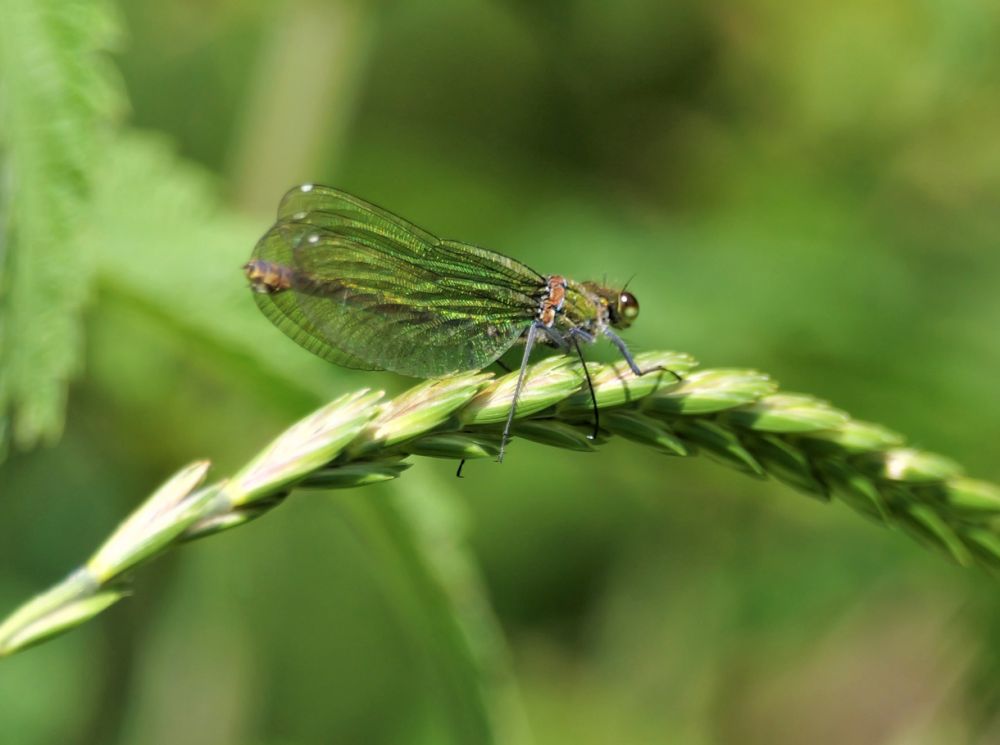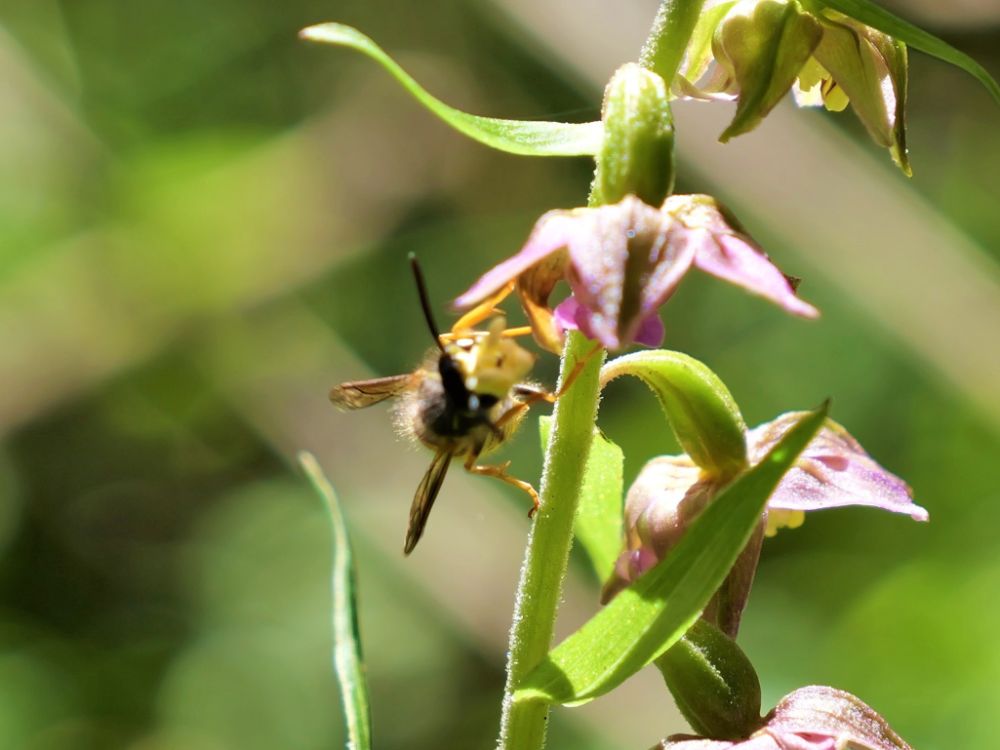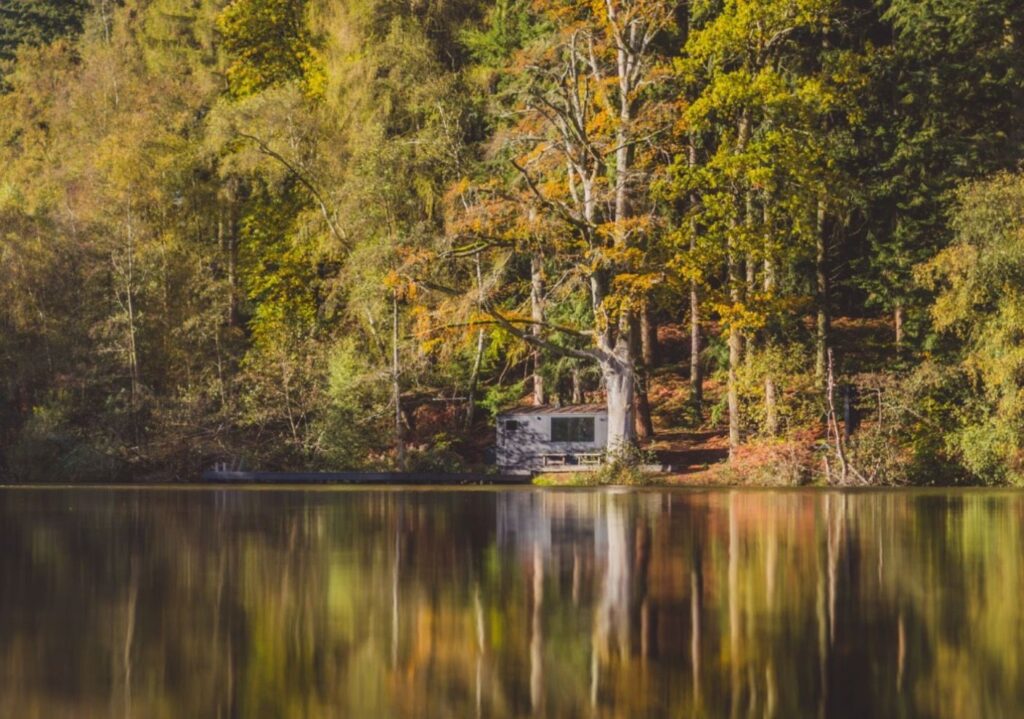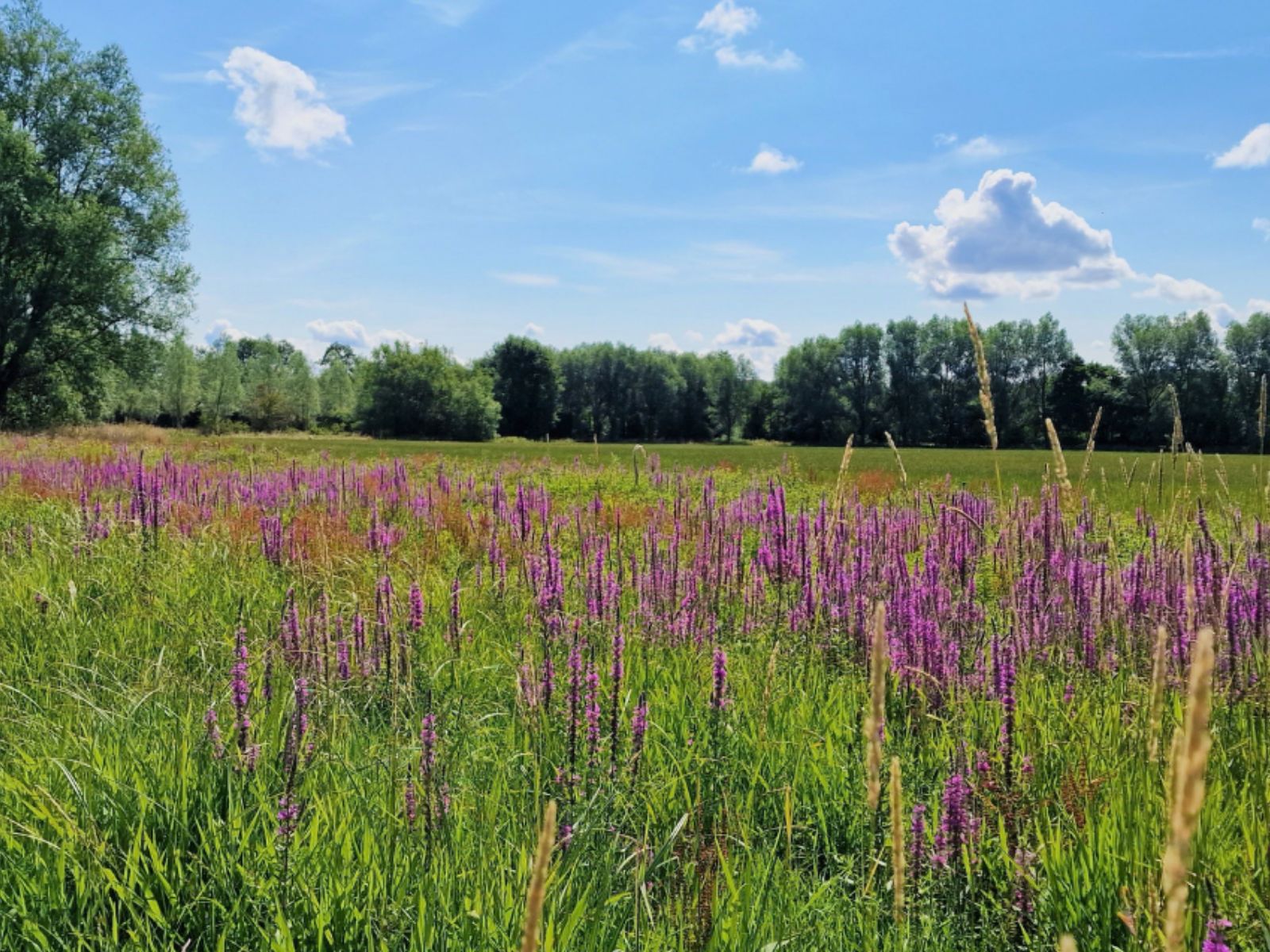Several miles of the River Kennet flows eastwards through Wasing Estate and provides multiple wildlife habitats and some excellent fishing. The beautiful Demoiselle which featured in May’s Nature Notes and the Banded Demoiselle can both be found at this time of year fluttering along the bankside vegetation by the river. A delicate balance of tree cover and open vegetated banks is required around the lakes and river to allow both species to flourish. The species are fairly easy to tell apart even though they look very similar at first glance; the male Banded Demoiselle has an iridescent blue-green body and a black patch on its translucent blue-green wings, while the female has an iridescent green body and translucent green wings. The male Beautiful Demoiselle has an iridescent blue-green body and translucent all-black wings, while the female has an iridescent green body and translucent brown wings.

The rivers support a wide range of marsh plants in the damp and boggy ground alongside them. As summer progresses additional species of plant come into flower and in July loosestrife and marsh woundwort can be found blooming. Purple loosestrife is easy to distinguish with its towering reddish-purple flower spikes and in the correct conditions it can form very large colonies. On the floodplain between the river and the Wasing’s agricultural land this substantial colony of hundreds of purple loosestrife plants provides essential nectar for thousands of bees and butterflies. The delightful marsh woundwort proves slightly harder to identify however its another brilliant summer nectar source for bees and butterflies. Looking much like an orchid, this plant can make substantial colonies but is typically only 1ft tall, compared to the 3ft-4ft tall purple loosestrife

In a cool, damp and shady part of the fishery a colony of 25-30 Broad-leaved helleborine orchids flowers in mid-summer amongst tall alder and oak trees. The helleborine contributes nothing to either the fungus or the tree, and is also able to photosynthesise via its own chlorophyll. Broad-leaved helleborine is nearly always pollinated by wasps, which are attracted by the sweet nectar, and seen below is a wasp with pollen stuck to its head.

The cool and wet July has had a vast effect on the vegetation and wildlife around the Estate, lets see what August has to bring!
_ Jock The Wasing Bailiff










